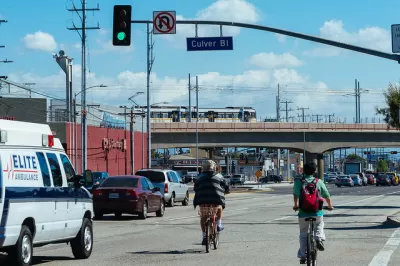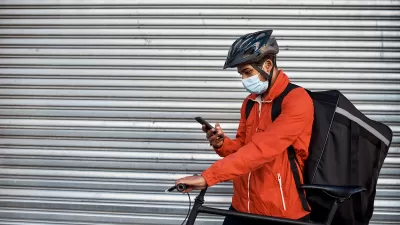One of the key assumptions of a new partnership between the planning and public health professions is that transit encourages more active mobility than possible with a car-centric lifestyle. But new research casts doubt on those assumptions.

"New findings by the University of Southern California and UC Irvine published in Transportation Research should give 'walkability' proselytizers some pause," according to an article by Laura Bliss. "This is one of the most comprehensive studies to date examining how access to light rail influences physical activity, and it found that having rapid transit nearby can boost steps for some—but can decrease them for others."
The study focused on physical activity by 200 participants living near Phase I of the new Expo Line in Los Angeles, which opened in 2012. According to Bliss, researchers found that although transit use increased after the new line opened, "there didn’t seem to be a significant jump in how physically active they were." When controlling for how physically active the subjects were to begin with, "individuals who were already pretty active turned out to be somewhat negatively affected by light rail access."
Bliss provides additional details on the finding of the study, and also noted how the experimental approach of this study differs from the cross-sectional approach of many previous studies that "found strong correlations between physical activity and transit use."
FULL STORY: When Light Rail Opens, Do People Really Get More Exercise?

Alabama: Trump Terminates Settlements for Black Communities Harmed By Raw Sewage
Trump deemed the landmark civil rights agreement “illegal DEI and environmental justice policy.”

Planetizen Federal Action Tracker
A weekly monitor of how Trump’s orders and actions are impacting planners and planning in America.

The 120 Year Old Tiny Home Villages That Sheltered San Francisco’s Earthquake Refugees
More than a century ago, San Francisco mobilized to house thousands of residents displaced by the 1906 earthquake. Could their strategy offer a model for the present?

In Both Crashes and Crime, Public Transportation is Far Safer than Driving
Contrary to popular assumptions, public transportation has far lower crash and crime rates than automobile travel. For safer communities, improve and encourage transit travel.

Report: Zoning Reforms Should Complement Nashville’s Ambitious Transit Plan
Without reform, restrictive zoning codes will limit the impact of the city’s planned transit expansion and could exclude some of the residents who depend on transit the most.

Judge Orders Release of Frozen IRA, IIJA Funding
The decision is a victory for environmental groups who charged that freezing funds for critical infrastructure and disaster response programs caused “real and irreparable harm” to communities.
Urban Design for Planners 1: Software Tools
This six-course series explores essential urban design concepts using open source software and equips planners with the tools they need to participate fully in the urban design process.
Planning for Universal Design
Learn the tools for implementing Universal Design in planning regulations.
Clanton & Associates, Inc.
Jessamine County Fiscal Court
Institute for Housing and Urban Development Studies (IHS)
City of Grandview
Harvard GSD Executive Education
Toledo-Lucas County Plan Commissions
Salt Lake City
NYU Wagner Graduate School of Public Service





























